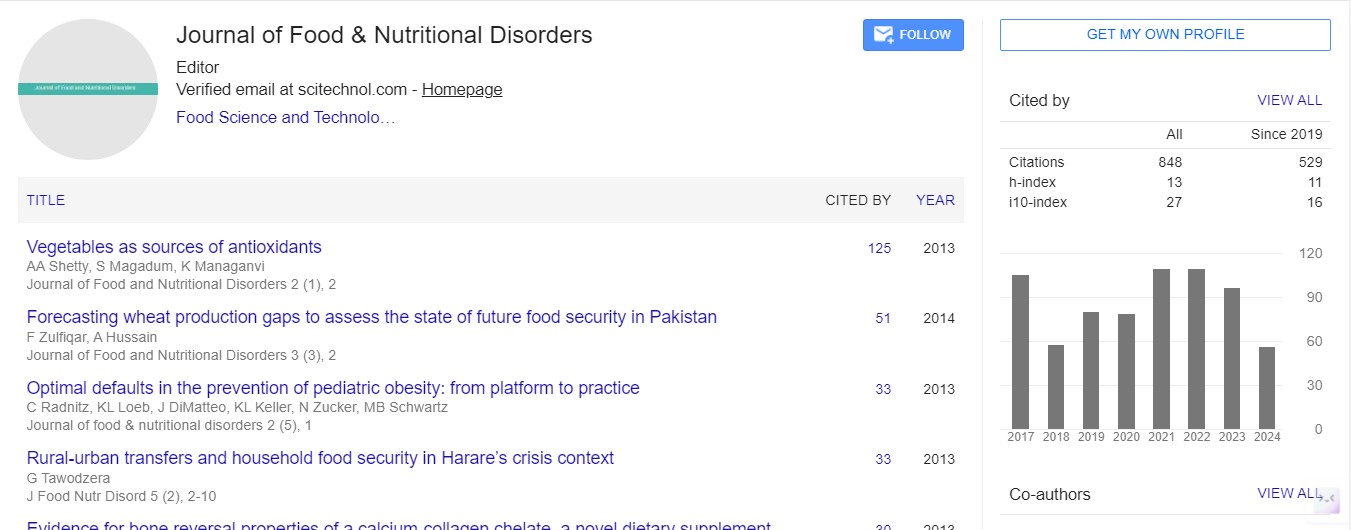Nutritional and fatty acid profile of human milk samples from selected areas of Pakistan
Murad Ali Khan, Kashmala Majid, Muhammad Adil, Inayatur Rahman, Muhammad Iqbal Khan
Department of Chemistry, Kohat University of Science and Technology, Kohat 26000, Pakistan
Medicinal Botanic Centre, PCSIR Labs Complex, Peshawar-25120, Pakistan
: J Food Nutr Disor
Abstract
Milk is the fundamental and complete diet for infant. It has a pivotal role in determining the growth pattern of the child. The best source for infants in early years of life is breast feeding and this is greatly encouraged for infants in early stage of life. Human milk is a complete diet for healthy infants. The composition of milk varies with the diet of mother, environment, and time of feeding. The fatty acid profile and nutritional value of the Breast milk of district Malakand and Kohat division was determined. Milk samples were analyzed for proximate composition and from the results the moisture, ash, fats, protein, and carbohydrate contents were found to be 3.632%, 0.94%, 87.69%, 0.29% and 7.32% respectively. The isolated fats were further analyzed by GC-MS to determine their fatty acid compositions quantitatively. The average fatty acid profiles showed that it is composed of saturated (SFA), monounsaturated (MUFA) and poly unsaturated fatty (PUFA) acid with concentration of 38.41%, 29.59% and 14.70% respectively. All these fractions were further investigated for fatty acid contents. In general, both proximate and fatty acids profiles were found slightly different compared to the contents of breast milk in developed countries. It was found that the majority of milk samples has higher percentages of saturated fatty acids and low percentage of protein range between 0.8-0.94 in the given samples. This difference may be due to the difference in diet, environment, and socioeconomic status of women in Pakistan.
 Spanish
Spanish  Chinese
Chinese  Russian
Russian  German
German  French
French  Japanese
Japanese  Portuguese
Portuguese  Hindi
Hindi 
